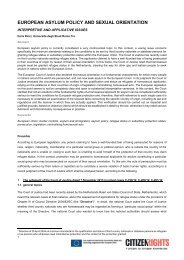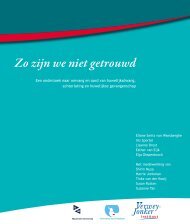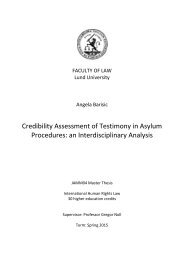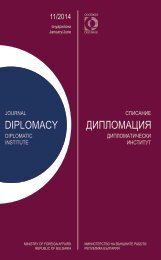AEMI
AEMI-2016-web
AEMI-2016-web
You also want an ePaper? Increase the reach of your titles
YUMPU automatically turns print PDFs into web optimized ePapers that Google loves.
100 <strong>AEMI</strong> JOURNAL 2015<br />
ing judgment and so there would often<br />
be disappointment when the picture of<br />
the dream clashed with the «misgivings»<br />
overseas.<br />
The picture Washington crossing the<br />
Delaware is an example of how early<br />
this development began. The event it<br />
depicts took place in the night of 25<br />
December 1776. Our interest here is<br />
in who painted the picture, where it<br />
was painted, and who were the people<br />
for whom it was first painted. The artist<br />
was Emmanuel Leutze, a German who<br />
in 1825 came over to America as a boy<br />
with his parents. In 1841 he went back<br />
to Düsseldorf to study art and painting,<br />
and in 1849 he painted this picture. So<br />
in fact it shows not the Delaware River<br />
but the Rhine at Düsseldorf. He painted<br />
this example of endurance as a stimulus<br />
and encouragement for the German<br />
revolutionists of 1848, whose failure became<br />
obvious in those days. The success<br />
of the painting in the USA came later<br />
in 1851. 4<br />
But this is only aside. Let us return to<br />
North-Frisia again. Returning migrants<br />
generally came back as American citizens;<br />
as a free person, subject to no one.<br />
Self-conscious and protected by their<br />
citizenship papers and the American<br />
consuls, these visitors always appeared<br />
suspicious to the police and were often<br />
a thorn in the flesh of the Prussian military<br />
authorities, which could be very officious<br />
in their dealing with young men.<br />
As a consequence such visitors had to<br />
be controlled and out of this originate<br />
between 1867 and 1918 the records regarding<br />
the supervision of emigrants,<br />
who stayed in Schleswig-Holstein as<br />
U.S. citizens. Now these documents are<br />
in the State Archives in Schleswig and<br />
they are an interesting and very informative<br />
source (Pauseback, Aufbruch, 64-<br />
74).<br />
In the second half on the 19th century<br />
the longing for freedom joined<br />
with the hope for prosperity and together<br />
they formed that mighty magnet<br />
that pulled millions of men, women and<br />
children into the New World. Like a little<br />
piece of this big dream the returned<br />
migrant symbolized all the longings and<br />
wishes of the ones who stayed behind<br />
and his example ‘magnetized’ many of<br />
them who came in touch with him.<br />
And so the suspicions of the authorities<br />
were not altogether without foundation,<br />
as we learn from the article in the Husumer<br />
weekly newspaper:<br />
The American – yes he once had been a<br />
poor fellow too in Germany … but he<br />
had been courageous enough and had<br />
gone to America and now he is a prosperous<br />
man. And the poor fellow here,<br />
who hardly ever has a few cents to spare,<br />
how will the prospect rejoice his heart,<br />
when he thinks about all the dollars he<br />
will own overseas, and imagines himself<br />
wearing a grey hat and a blue coat with<br />
red lining – like the American. 5<br />
Efforts of the authorities to curb emigration<br />
had little effect, because official<br />
warnings or statements were generally<br />
distrusted and rejected by the common<br />
people. Their sources of information<br />
were the many letters, which went from<br />
hand to hand. Sometimes they were<br />
published in the local newspapers too<br />
and got additional publicity that way.<br />
At the beginning of travel to America<br />
and to West- or East India most of<br />
them who left returned, if they had been









